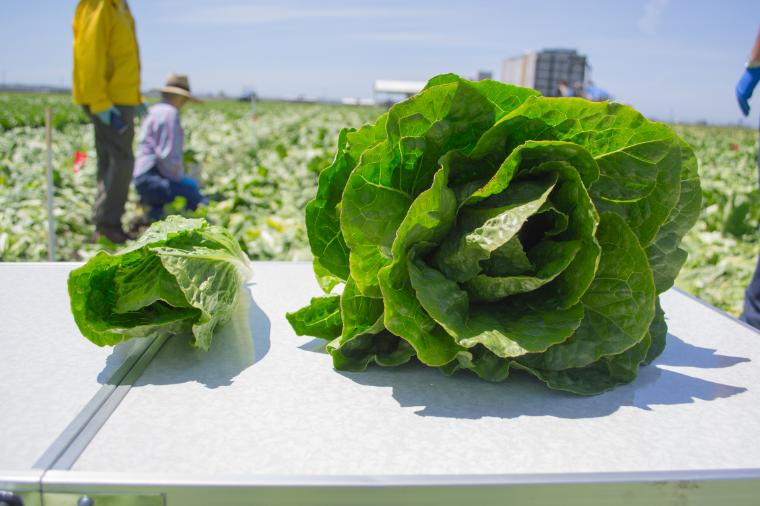
Fresh from The Forge: In-field Food Waste
Allison Carmody '17, Sustainability Intern for Food & Dining & Katharine Krieg,
Professor Michael Harwood of the Food & Agribusiness Institute (FAI) reached out to Katharine Krieg, Forge Garden Manager, for her expertise on growing and harvesting food, and she happily agreed to lend a hand to address in-field food waste. There has been little research regarding in-field food waste on large scale farming operations, so this two-to-three year study holds great potential in shaking up the industry for the better.
The research assesses the extent of on-farm food waste and the proportion of it that could be salvaged for human consumption. It also looked to identify supply shortfalls for fresh produce at the Second Harvest Food Bank of Santa Clara and San Mateo Counties, as well as cost-effective methods of bringing the salvaged produce to families in need. The team decided to focus on ten crops: romaine hearts, sweet corn, tomatoes, strawberries, cauliflower, broccoli, cantaloupes, celery, artichokes and bunched spinach. Five students set out in the Salinas and San Joaquin Valleys this summer and followed behind harvesting crews, collecting the edible food waste left behind to sort and weigh it. Romaine hearts topped the charts with waste--since only the inner part of the plant is harvested for market, up to 70% of the outer leaves are left in the field!
Now, this food waste isn’t just from haste. There are many infrastructure, packaging, and market limitations that contribute to food waste. During their work at the farms, it became apparent to the team that many farm managers do want to sell more of their crops, but changes to both their infrastructure and consumer culture must be made. At one farm, perfectly grown broccoli was left in the field because it would not fit in the pre-determined box size--a clear, yet unavoidable, infrastructure failure.
As consumers, we must learn to become comfortable with “imperfect” produce. The veggies with small blemishes are often safe to eat or can be cut down. Oddly shaped produce has the same nutrition as the perfectly grown kind--don’t be afraid to pick it! As Katharine put it, we need to “[rethink] the way our food should look. Garden fresh produce is beautifully unique, just how our food should be.” Garden fresh produce means buying romaine heads, not the pristinely butchered kind that come in bags. Pay close attention to the produce packaging in the grocery store and work to purchase the most pure form of the food--free of plastics and containers--and you’ll be one step closing to tackling farm food waste.
At The Forge, Katharine maximizes each of our harvests by maintaining multiple markets for the produce. The Farm Stand and donations to HomeSafe ensure our fresh, organic produce makes it beyond the field and into the kitchens of the community. When The Forge has particularly large harvests, it is sold to Bon Appetit for the campus community to enjoy in Benson Marketplace and Adobe Lodge. If you’re looking to contribute to a healthier food system on a personal level, consider stopping by The Forge for some tips, tricks and ideas or attend an event hosted by the FAI. Or, try growing your own garden. The San Jose area has a great climate for year-round vegetable production, and growing a home garden builds a connection between wellbeing and the environment.